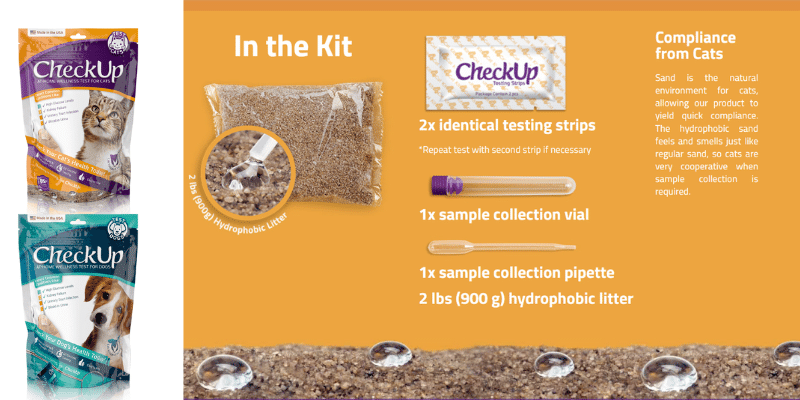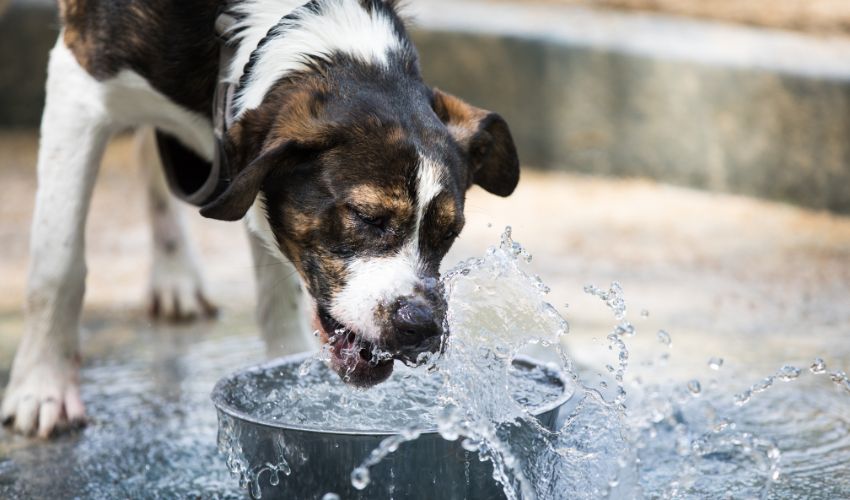Often called the “sunshine vitamin,” vitamin D is an essential component that is vital to sustaining general health and wellbeing. In contrast to other necessary vitamins, vitamin D acts more like a hormone, having a significant impact on the body’s physiological processes. It is impossible to overestimate the benefits of vitamin D, which range from promoting bone health to controlling immunological response and mood.
Calcium is a mineral that the body needs for healthy bones, muscle contraction, the functioning of the neurological and immunological systems, and vitamin D is required for the body to absorb calcium. Overdosing on vitamin D can lead to toxicity. Two types of vitamin D exist. Vitamin D2 (ergocalciferol) is generated by plants, fungi, and yeasts, while animals create vitamin D3 (cholecalciferol). While vitamin D is essential for maintaining health in humans and many other animals, including dogs, it can become toxic when ingested in excessive amounts.
When does Vitamin D poisoning occur?
Pets that consume supplements containing either form of vitamin D or rodenticides (rat and mouse poisons) containing cholecalciferol are frequently poisoned. Compared to vitamin D3 (cholecalciferol), vitamin D2 (ergocalciferol) has a far wider margin of safety and is often better tolerated by animals in bigger doses. Strong doses of vitamin D (calcipotriene, tacalcitol, or calcitriol) are also present in many topical psoriasis treatments, and pets that lick the cream off of someone’s skin or straight out of the tube run the risk of becoming poisoned. Poisoning can also occur from poorly prepared pet feeds, both commercially and home-made.
Whatever the cause, vitamin D toxicity in dogs can have major health effects and has to be treated by a veterinarian very away. When utilizing vitamin D-containing goods, pet owners should exercise caution and make sure the products are stored safely and out of pets’ reach. For affected dogs to recover well, vitamin D toxicity must be identified and treated as soon as possible.
What are the signs and symptoms of Vitamin D toxicity in dogs?
Dogs suffering from vitamin D toxicity may exhibit a variety of signs and symptoms, which are contingent upon the extent of the poisoning and the quantity of vitamin D consumed. In dogs, some typical indications and manifestations of vitamin D intoxication include:
- Dogs may vomit: This is a common reaction that happens soon after they consume too much vitamin D.
- Increased thirst and urination: As the body tries to eliminate the extra vitamin D, too much vitamin D can cause polydipsia, or increased fluid intake, and polyuria, or increased urine production.
- Weakness and lethargy: Dogs suffering from vitamin D poisoning may exhibit exceptionally low energy levels, a lack of vigor, and a reluctance to exercise.
- Dehydration: Increased fluid loss through vomiting and urination can result in dehydration, characterized by dry gums, sunken eyes, and reduced skin elasticity.
- High blood calcium levels (hypercalcemia): Too much vitamin D can cause high blood calcium levels, which can cause symptoms like weakness, sluggishness, and kidney damage.
- Loss of appetite: Due to gastrointestinal distress, dogs may become less interested in eating or stop eating completely.


How is vitamin D toxicity diagnosed?
The diagnosis of vitamin D poisoning in dogs is usually made using a combination of laboratory testing to measure vitamin D levels and related metabolic abnormalities, clinical symptoms, and the patient’s history of exposure to vitamin D-containing substances. Veterinarians frequently employ the following diagnostic techniques to identify vitamin D toxicity in dogs:
- Physical examination: To evaluate the dog’s general health and spot any anomalies that might point to vitamin D poisoning, a comprehensive physical examination is performed. This could entail assessing the dog’s level of hydration as well as its heart, breathing, and neurological health.
- History and clinical signs: The vet will ask the dog’s owner about the diet, vitamins, medications, and any possible exposure to substances that contain vitamin D. Clinical symptoms that may indicate vitamin D intoxication include nausea, vomiting, lethargy, increased thirst and urination, and gastrointestinal distress.
- It is essential to perform blood testing to assess renal, phosphorus, and calcium levels. In cases when the dosage was small, outpatient treatment can be adequate. Higher doses may require inpatient care, which may include intravenous fluids, extra drugs to block vitamin D absorption, steroids, antiemetic drugs, antacids, and drugs to lower calcium and phosphorus levels.
How is Vitamin D poisoning treated?
Vomiting may be induced by the veterinarian if consumption happened within a few hours after treatment. Activated charcoal may be given after vomiting has been managed. This may lessen the amount of vitamin D that is absorbed by the digestive system. Only veterinarians should provide activated charcoal. If not, there could be a risk of aspiration into the lungs and potentially fatal variations in blood sodium levels. If only a small amount was consumed, outpatient treatment might be adequate. Higher doses may require inpatient care, which may include intravenous fluids, extra drugs to block vitamin D absorption, steroids, antiemetic drugs, antacids, and drugs to lower calcium and phosphorus levels.
Vitamin D overdose can have long-lasting symptoms, ranging from weeks to months. After leaving the hospital, blood tests to check kidney function, calcium levels, and phosphorus levels is usually advised. It might be necessary to continue monitoring for several weeks if there are increases in the readings of calcium, phosphorus, or kidney values. Since calcium levels might rise again after first treatment, some dogs might need to stay in the hospital for longer periods of time. When dogs’ calcium levels rise, kidney injury may result. Long-term care for renal failure may be necessary, which may include antacids, blood pressure meds, fluid therapy, anti-nausea drugs, and blood test monitoring.
















